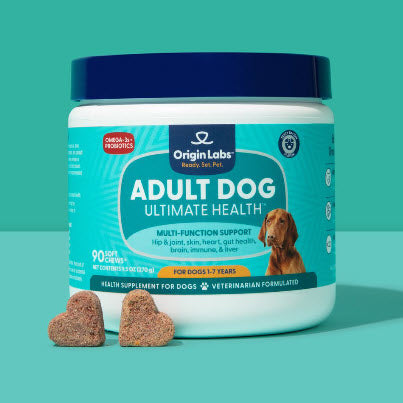Introduction
Many dog owners are curious about whether their pets can see in the dark. This question arises from a desire to understand how dogs perceive the world. It's important for pet owners to grasp the concept of dog night vision because it affects their pets' behavior and safety at night.
Significance: Understanding the extent of dogs' night vision abilities enables owners to make better choices regarding evening activities, such as walks, playtime, and precautionary measures. There are several misconceptions surrounding this topic, including the notion that dogs can see perfectly in complete darkness or that their vision is on par with nocturnal creatures like cats.
To uncover the truth about dogs and their night vision capabilities, we need to delve into the science behind their visual system. This involves exploring the unique anatomy of a dog's eye and understanding how it functions in low-light conditions. By examining these elements closely, we can shed light on whether our furry friends truly possess night vision or if their abilities are more limited than some might think.
The Anatomy of a Dog's Eye
Understanding dog eye anatomy is essential to uncovering how dogs perceive the world, especially in low-light conditions. Several unique features play critical roles.
Key Components
Tapetum Lucidum
- Dogs have a special layer behind their retina called the tapetum lucidum. This reflective structure bounces light that goes through the retina back into their eyes, helping them use any available light better.
- This adaptation improves their ability to see in dim lighting, giving their eyes a characteristic glow when caught in headlights or flashlights at night.
Rod-Dominated Retina
- Unlike humans, dogs have more rod cells and fewer cone cells in their retinas. Rods are photoreceptor cells sensitive to low light and motion, while cones are responsible for color vision and detail.
- The dominance of rods over cones helps dogs see better in the dark but limits their color perception compared to humans.
How These Features Work Together
- Enhanced Light Sensitivity: The combination of a rod-dominated retina and the tapetum lucidum means dogs can detect lower levels of light, making it easier for them to see in dark environments.
- Light Recycling: The tapetum lucidum essentially "recycles" incoming light by reflecting it back through the retina, giving photoreceptor cells another chance to capture photons. This process maximizes the amount of usable light and aids in night vision.
Understanding Dog Night Vision Mechanisms
Dogs have special adaptations in their eyes that help them see better in the dark. Here's how these mechanisms work:
1. Larger Pupils: A Gateway to More Light
One of the adaptations is the size of their pupils. Dogs have larger pupils compared to humans, which allows more light to enter their eyes. When it's dark, their pupils dilate even further, letting in as much light as possible.
2. The Role of the Tapetum Lucidum
Another important feature is the tapetum lucidum, a reflective layer located behind the retina. Here's what it does:
- Reflects Light: The tapetum lucidum reflects incoming light back through the retina, giving photoreceptor cells another chance to absorb it.
- Enhances Vision: By reflecting light, this structure increases the overall amount of available light for vision, making it easier for dogs to see in low-light conditions.
The tapetum lucidum is also responsible for the characteristic "eye shine" seen when light hits a dog’s eyes at night.
3. Rod and Cone Cells: The Photoreceptors
Rod and cone cells are two types of photoreceptor cells found in the retina. They play different roles in vision:
Rod Cells:
- Dogs have a higher density of rod cells compared to cone cells.
- Rods are highly sensitive to low levels of light and are responsible for detecting motion and shapes in dim environments.
Cone Cells:
- Cones are responsible for color perception and function best in bright light.
- In dogs, cones are present but less prevalent than rods, meaning color vision is not as developed as in humans.
Because dogs have more rod cells than cone cells, they have an advantage when it comes to seeing in the dark.
Dogs' Night Vision vs. True Nocturnal Vision
It's important to understand that while dogs have adaptations for low-light vision, they don't have the same level of night vision as animals like owls or cats:
- Optimized for Dim Light: Dogs see best during dawn and dusk when there's still some light available (crepuscular vision). They are not well-suited for complete darkness.
- Reliance on Other Senses: In very dark environments, dogs rely more on their heightened senses of smell and hearing to get around.
Knowing these mechanisms helps explain why your dog may be more active at night but still needs some light to see comfortably.
Testing Dog Night Vision Abilities
Studying and measuring dog night vision poses unique challenges. Unlike humans, dogs cannot describe their visual experiences, making it difficult to objectively assess how well they see in the dark. Researchers rely on indirect methods and behavioral observations to infer the capabilities of dog vision in low-light conditions.
Research and Experiments
Several studies have aimed to understand how dogs perceive their environment in dim light. Experiments often involve placing dogs in controlled lighting environments and observing their ability to navigate obstacles or locate objects. For instance, a study published in Applied Animal Behaviour Science found that dogs could successfully navigate mazes with minimal lighting, indicating some proficiency in low-light scenarios.
Key Findings:
- Dogs exhibit better navigation skills in dim light than in total darkness.
- The presence of the tapetum lucidum significantly enhances their ability to see by reflecting available light onto the retina.
Practical Ways to Evaluate Your Dog's Night Vision
Dog owners can conduct simple experiments at home to observe their pet’s behavior in low-light conditions. Here are some practical tips:
- Controlled Dark Environment: Create a safe, dimly lit area where you can observe your dog's movements. Use curtains or blinds to block out external light sources.
- Obstacle Course: Set up a small obstacle course with familiar objects to see if your dog can maneuver around them without difficulty.
- Toy Retrieval: Place a favorite toy at one end of the room and observe if your dog can locate it using visual cues alone.
These activities help gauge how well your dog relies on vision versus other senses like smell and hearing when navigating the darkness.
Understanding these nuances helps dog owners appreciate their pet's unique sensory abilities and ensures they provide a safe environment for nighttime activities.
The Cat vs. Dog Night Vision Debate
Cats' Superior Nocturnal Vision
When comparing the night vision abilities of cats and dogs, cats clearly have the upper hand. Evolution has equipped cats with several adaptations that make them exceptional hunters in low-light conditions:
- Tapetum Lucidum: Both cats and dogs possess this reflective layer behind the retina, but it is more pronounced in cats, enhancing their ability to see in near darkness.
- Rod-Dominated Retina: Cats have a higher density of rod cells compared to dogs, which allows them to detect motion and see better in dim light.
- Larger Corneas and Pupils: These features allow more light to enter a cat’s eye, significantly improving their night vision.
Dogs' Reliance on Other Senses
Dogs may not match cats in visual prowess under low-light conditions, but they compensate with other heightened senses:
- Keen Sense of Smell: Dogs have an extraordinary olfactory system, which they use extensively to navigate their environment when visibility is poor.
- Acute Hearing: Their ability to hear high-frequency sounds helps them detect movement and locate objects or beings even when they can't see clearly.
Common Beliefs and Misconceptions
Some people believe that dogs can see ghosts or supernatural entities in the dark. This notion likely arises from their behavior and heightened sensory perception:
"Dogs often exhibit body language such as barking at unseen objects or staring into empty spaces."
This behavior can be attributed to their acute senses picking up stimuli that humans cannot detect. Rather than seeing ghosts, dogs might be responding to subtle sounds, smells, or movements invisible to the human eye.
By understanding these aspects of dog and cat night vision, pet owners can better appreciate how each animal navigates and perceives their nighttime world.
Foods to Support Your Dog's Vision
- Packed with vitamins C and K, blueberries are a powerhouse of antioxidants. These small berries can help reduce inflammation and oxidative stress on your dog's eyes.
Carrots
- Carrots are well-known for their high beta-carotene content, which is converted into vitamin A in the body. Vitamin A is essential for maintaining good vision and overall eye health.
- Rich in vitamins A, C, and E, as well as essential minerals like zinc, pumpkin is excellent for promoting healthy eyesight. The fiber in pumpkin also supports digestive health.
Kale
- This leafy green is loaded with lutein and zeaxanthin, antioxidants that protect against cataracts and other eye diseases. Kale also provides vitamins A, C, and K.
Sweet Potatoes
- Another great source of beta-carotene, sweet potatoes also offer vitamins C and E. These nutrients work together to combat free radicals that can damage eye cells.
Eggs
- Eggs contain lutein and zeaxanthin, along with high-quality protein. These compounds help protect the eyes from harmful light wavelengths.
- Rich in omega-3 fatty acids like DHA (docosahexaenoic acid), fish oils support retinal health and reduce inflammation throughout the body.
Incorporating these foods into your dog's diet can be an easy way to ensure they receive the nutrients necessary for optimal eye health. Always consult with your veterinarian before making any significant changes to your pet's diet to ensure these foods are suitable for their specific health needs.
By focusing on a diet rich in these antioxidant-laden foods, you can help maintain your dog's vision and overall health. Additionally, consider incorporating Origin Labs Adult Food Supplements to support your dog's diet.
Conclusion
While dogs may have certain visual advantages in low-light conditions, scientific evidence suggests that they don't possess true night vision like some other animals. Their eye anatomy, featuring elements such as the tapetum lucidum and a rod-dominated retina, does enhance their ability to see in dim lighting. However, this doesn't equate to the night vision capabilities seen in nocturnal creatures.
Appreciating and working with your dog's natural sensory abilities is key. Instead of relying on unrealistic expectations of perfect night vision, consider their keen sense of smell and hearing, which can be more effective in guiding them through low-light environments.
To ensure the safety of dogs during nighttime activities:
- Use reflective gear: Collars, leashes, and vests with reflective materials can make your dog more visible.
- Provide adequate lighting: Use LED collars or attach small lights to their harness.
- Create well-lit paths: If possible, keep walking routes well-lit to help both you and your pet navigate safely.
Understanding the true nature of dog night vision allows for better care and safer experiences during evening adventures.
FAQs (Frequently Asked Questions)
What is the significance of understanding dog night vision for dog owners?
Understanding dog night vision is important for dog owners as it can help them comprehend their pet's behavior and ensure their safety during nighttime activities.
What common misconceptions do people have about dogs' ability to see in low-light conditions?
Common misconceptions about dogs' night vision include the belief that they have true night vision like some other animals, and the idea that they can see ghosts or supernatural entities in the dark.
What are the key components of a dog's eye that are relevant to their vision in low-light environments?
The key components of a dog's eye relevant to their vision in low-light environments include the presence of a tapetum lucidum and rod-dominated retina.
How do the anatomical features of a dog's eye potentially enhance their ability to see in the dark?
The presence of a tapetum lucidum and rod-dominated retina work together to potentially enhance a dog's ability to see in the dark by reflecting light and having an increased number of photoreceptor cells.
What specific adaptations in dogs' eyes contribute to their potential night vision capabilities?
Specific adaptations in dogs' eyes that contribute to their potential night vision capabilities include larger pupils, the function of the tapetum lucidum in reflecting light, and the prevalence of rod cells in their retinas.
How can readers observe and evaluate their own dogs' night vision?
Readers can observe and evaluate their own dogs' night vision by creating a controlled dark environment and observing their pet's behavior, as well as considering any research or experiments conducted to assess dogs' visual performance in dim light conditions.








